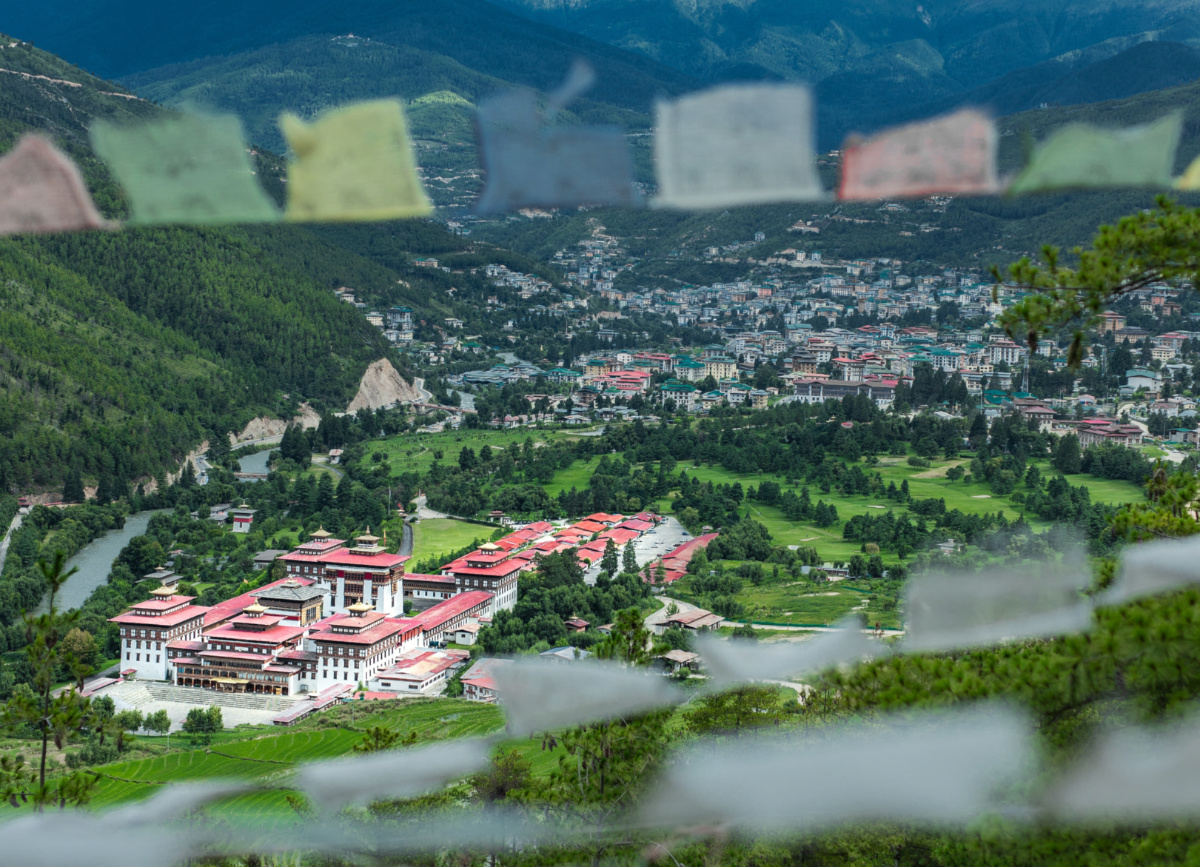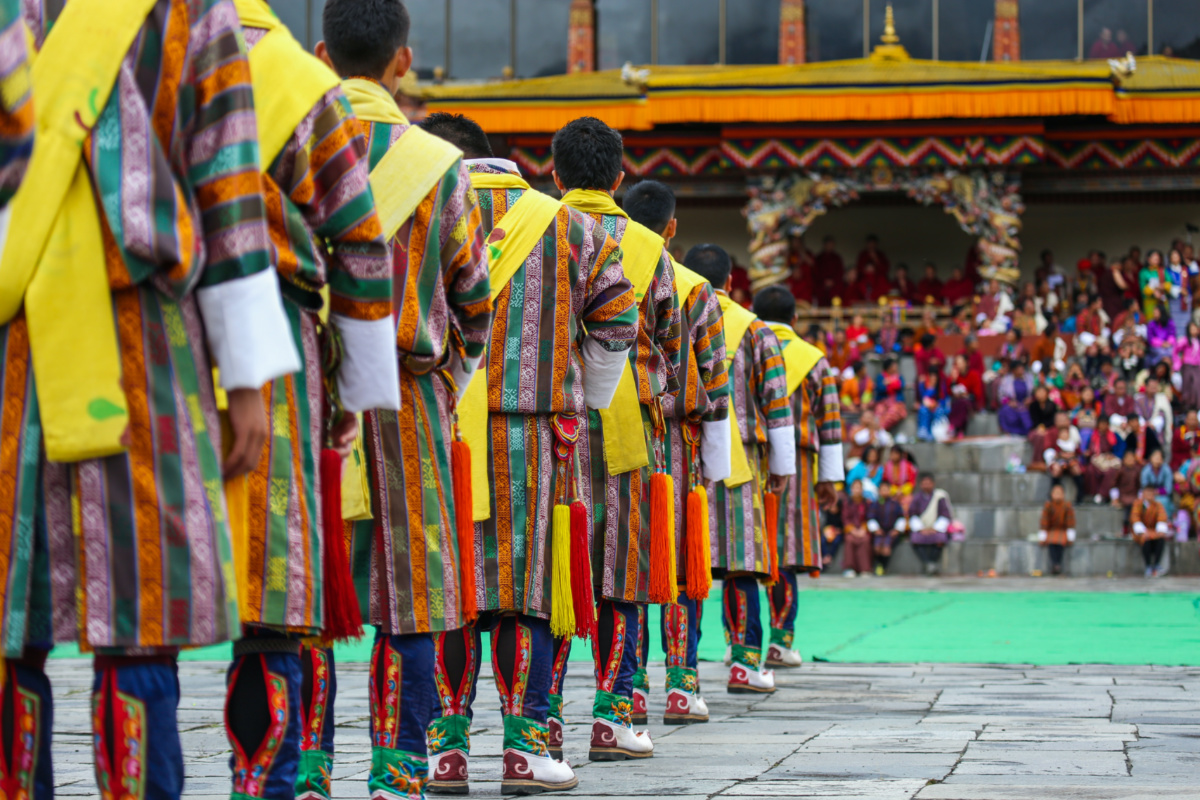
Bhutan’s Sustainable Development Fee highlights challenge of trying to revive tourism post-pandemic while avoiding harm to nature. ROLI SRIVASTAVA, of Thomson Reuters Foundation, reports…
Mumbai, India
Thomson Reuters Foundation
In the scenic Himalayan kingdom of Bhutan, cleaning squads patrol forest and mountain trails on the lookout for litter left behind by tourists, removing empty water bottles and crisp packets stuck in bushes and trees.
The money to run these teams comes from a tourist tax that Bhutan has levied for decades to avoid over-tourism and preserve its status as South Asia’s only carbon-negative country – meaning it absorbs more emissions than it produces annually.

The Tiger’s Nest monastery in Paro in Bhutan, a popular tourist site. PICTURE: Aaron Santelices/Unsplash
Bhutan halved the daily “Sustainable Development Fee” – to $US100 – last month as it strives to strike a balance between supporting the local economy and jobs, and protecting nature and the environment in the face of worsening climate change impacts.
Under the country’s principle of “high-value, low-volume” tourism, Bhutanese officials told Context that the tax goes towards upgrading infrastructure, preserving natural and cultural treasures, and investing in electric transport to cut fossil fuel dependency.
“[A] sustainability fee is one of the ways to ensure a destination does not degrade. It is a good tool for conservation.”
– CB Ramkumar, vice chairman of the Global Sustainable Tourism Council.
While the tiny country of fewer than 800,000 people is currently in the spotlight, it is far from alone in this regard.
As nations globally seek to revitalise their tourism sectors after the COVID-19 pandemic, there is growing debate about how best to attract more visitors and boost revenues without causing overcrowding and fuelling pollution and harm to the environment.
Sustainability experts said the traditional approach of evaluating tourism through visitor numbers alone was outdated and damaging to the sector, and urged governments to consider ways of drawing people for longer and more-considered stays.
“[A] sustainability fee is one of the ways to ensure a destination does not degrade,” said CB Ramkumar, vice chairman of the Global Sustainable Tourism Council, a US-based non-profit. “It is a good tool for conservation.”
While many countries and cities have some form of tourist tax, few places have followed Bhutan’s lead in ensuring that the cash goes towards conservation or sustainability efforts.
New Zealand in 2019 introduced a $NZ35 tourist tax to fund conservation and infrastructure projects, while Indonesia’s holiday island of Bali is to impose a 150,000 rupiah ($US10) fee from 2024 to help preserve its culture and environment.
Tourism is responsible for around eight to 11 per cent of global greenhouse gas emissions – mostly due to transportation – according to the World Travel and Tourism Council, an international forum.
It is also among the most vulnerable sectors to the impacts of climate change, with researchers citing soaring temperatures and rising sea levels that can affect visitor numbers.
For example, about 20,000 foreign tourists were evacuated from the Greek island of Rhodes in July, where a wildfire burned resorts and hotels. Greece has said it will offer a week’s free stay on Rhodes in 2024 to visitors whose vacation was cut short.
Overall, demand for eco-friendly tourism is growing, yet very few people are willing to pay more for sustainable travel, according to recent studies and warnings from sector executives.

A view over Thimphu, capital of Bhutan, with the Buddhist monastery and fortress Tashichho Dzong in the foreground. PICTURE: Passang Tobgay/Unsplash
In Bhutan, the SDF has been revised over the years – with discounts available for visitors making longer trips.
When Bhutan reopened to tourists in September, 2022, after more than two years of COVID-19 closure, it raised the tax to $US200 from the $US65 it had charged for about three decades – saying the money would offset the carbon generated by visitors.
This fee hike, coupled with the pandemic’s impact, hit tourist numbers and resulted in losses for tour operators, hotel owners, and handicraft and souvenir shops in the country.
Bhutan welcomed nearly 60,000 tourists between January and August this year, earning the nation $US13.5 million in revenue from the SDF, according to government data.
In 2019, before the pandemic, there were about 316,000 tourists, generating $US88.6 million in SDF revenue.
When Bhutan announced the SDF reduction last month, the government said the move aimed to revive the tourism sector, generate employment, and earn the country foreign exchange.
Bhutan plans to lift tourism’s contribution to its $US3 billion economy to 20 per cent from about five per cent now – yet no time-frame has been set.
Dorji Dhradhul, the director general of Bhutan’s tourism department, said the tourist tax is vital to stepping up the nation’s conservation efforts as it faces climate change threats of melting glaciers and ever-more unpredictable weather.
The SDF has led the country to explore “solutions to balance its revered ecological conservation practices with socio-economic progress”, Dhradhul said by email.
The tax funds free healthcare and education for the country’s citizens and is used to offset the carbon footprint of visitors by planting trees, cleaning and maintaining trails, and electrifying Bhutan’s transportation sector, Dhradhul said.
“Our future requires us to protect our heritage and forge fresh pathways for forthcoming generations,” he said.
Bhutan’s “carbon negative” approach began in the 1970s, when its then-king pushed for an economy built in part on sustainable forest management – balancing conservation and development.
Its forests absorb more than nine million tonnes of carbon each year, while its economy, which is designed to cut fossil fuel use and waste, emits less than four million tonnes, Dhradhul said.

A group of male dancers get ready for a traditional item during a festuval in Thimphu. PICTURE: Pema Gyamtsho/Unsplash
Bhutan has long been a prime holiday destination for Indian travellers in particular. Entry for Indians had been free until 2022, when a daily tax of 1,200 rupees ($US14.50) was introduced.
Mumbai-based tour operator Rakesh Kalyani has a longstanding collaboration with hoteliers in Bhutan, and said he was not surprised by the move to impose a tax on Indian tourists.
“Tourists littered, someone even climbed a stupa [Buddhist shrine] and took pictures. How do you stop that?” asked Kalyani, who said he now has no bookings for Bhutan with many clients instead preferring to visit nearby northeastern Indian states.
The fee for Indian tourists will remain in place for at least another two years as Bhutan prioritises the wellbeing of its environment, culture and people over “quantity in tourism”, according to Dhradhul.
We rely on our readers to fund Sight's work - become a financial supporter today!
For more information, head to our Subscriber's page.
As more and more places worldwide consider tourist taxes, they run the risk of excluding those seeking affordable travel.
“They want to preserve their culture, but not everyone is able to travel now,” said Arjun Verma, who runs Bhutan Divine Tour agency in Siliguri, a district in India’s eastern state of West Bengal, which serves as the country’s gateway to Bhutan.
“As tour operators, we are facing a lot of problems.”
In Bhutan, Jigme Tshering, chairman of the Hotel and Restaurant Association, a national federation, said that while the SDF was aligned with the country’s vision of sustainability, it also posed challenges in terms of “the impact on businesses”.
He said he hoped the reduced tax will help the tourism industry grow at a faster pace than in previous months – a view echoed by local businesses seeking more customers and income.
In Bhutan’s Paro, the picturesque valley home to the Tiger’s Nest Monastery, handicraft shop owner Tashi Lhamo said she had cut down spending on family holidays and new clothes due to the loss in business over the past year as tourist numbers dropped.
“Most of our customers are Asians and few are from the United States,” Lhamo said in a phone interview.
“But I am hopeful for more international tourists to come now that they have reduced the SDF. Indians buy small items, but our main business comes from international tourists,” she added.






